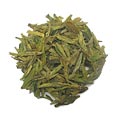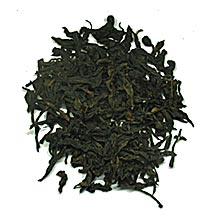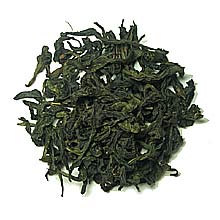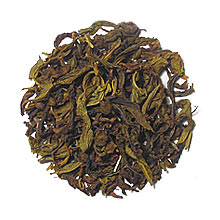 The clay of this teapot is fine, and it has not been used yet. It'll look nicer and shinier after being used for a period of time. Will post the pictures again in future.
The clay of this teapot is fine, and it has not been used yet. It'll look nicer and shinier after being used for a period of time. Will post the pictures again in future. It's not even my palm size.
It's not even my palm size.A cup of tea for a taste of life... The main purpose of this blog is to share on the tea knowledge and the benefits of tea. Thank you for your support and comments!
 The clay of this teapot is fine, and it has not been used yet. It'll look nicer and shinier after being used for a period of time. Will post the pictures again in future.
The clay of this teapot is fine, and it has not been used yet. It'll look nicer and shinier after being used for a period of time. Will post the pictures again in future. It's not even my palm size.
It's not even my palm size. YiXing 宜兴 (pronounced ee-shing) teapots first appeared during the Sung Dynasty (960-1279) in the YiXing region of China, located in the Jiangsu province, about 120 miles northwest of Shanghai. The Jiangsu province is the world's only source for the unique clay from which YiXing teapots are made, called purple or red clay. YiXing teapots were relatively unknown for many years until the late Ming Dynasty (1600s) when their use and production began to flourish. Demand from Europe and throughout China fueled an active industry in which many artists developed their craft to high levels of mastery. For the next three hundred years, YiXing teapots attained renown throughout China and Europe. Although the Europeans strove to imitate the YiXing teapots, they could not compete with the unique purple clay only found near YiXing, China.
YiXing 宜兴 (pronounced ee-shing) teapots first appeared during the Sung Dynasty (960-1279) in the YiXing region of China, located in the Jiangsu province, about 120 miles northwest of Shanghai. The Jiangsu province is the world's only source for the unique clay from which YiXing teapots are made, called purple or red clay. YiXing teapots were relatively unknown for many years until the late Ming Dynasty (1600s) when their use and production began to flourish. Demand from Europe and throughout China fueled an active industry in which many artists developed their craft to high levels of mastery. For the next three hundred years, YiXing teapots attained renown throughout China and Europe. Although the Europeans strove to imitate the YiXing teapots, they could not compete with the unique purple clay only found near YiXing, China. I heard about Jiao Gu Lan tea from a friend a few days ago and I did a little finding as below:
I heard about Jiao Gu Lan tea from a friend a few days ago and I did a little finding as below: Jiao-gu-lan (gynostemma pentaphyllum)
Jiao-gu-lan (gynostemma pentaphyllum) Nèi fēi (内飞): A small ticket originally stuck on the tea cake but now usually embedded into the cake during pressing. It is usually used as proof, or a possible sign, to the authenticity of the tea. Some higher end pu-erh cakes have more than one nèi fēi embedded in the cake. The ticket usually indicates the tea factory and brand.
Nèi fēi (内飞): A small ticket originally stuck on the tea cake but now usually embedded into the cake during pressing. It is usually used as proof, or a possible sign, to the authenticity of the tea. Some higher end pu-erh cakes have more than one nèi fēi embedded in the cake. The ticket usually indicates the tea factory and brand.
Nèi piào (内票): A larger ticket or flyer packaged loose under the wrapper. Both aid in assuring the identity of the cake. It usually indicates factory and brand. As well, many nèi piào contain a summary of the tea factories' history and any additional laudatory statements concerning the tea, from its taste and rarity, to its ability to cure diseases and affect weight loss.
Recently, nèi fēi has become more important in identifying and preventing counterfeits. Menghai Tea Factory in particular has begun microprinting and embossing their tickets in an effort to curb the growth of counterfeit teas found the the marketplace in the late 1990s and early 2000s. Some nèi fēi also include vintage year and are production-specific to help identify the cake and prevent counterfeiting through a surfeit of different brand labels.

 A Chinese expert researching the Ancient Tea-Horse Road recently found a complete map of the road drawn more than 150 years ago by a French missionary. The map reveals that the road traversed a series of towering mountains, with rivers flowing in between from the south to the north. There were six main routes:
A Chinese expert researching the Ancient Tea-Horse Road recently found a complete map of the road drawn more than 150 years ago by a French missionary. The map reveals that the road traversed a series of towering mountains, with rivers flowing in between from the south to the north. There were six main routes: The name of the road (Chamadao 茶马道 in the Chinese records meaning “the tea and horse road”) indicates its importance in the trade of tea and horses, but other products passed along it as well. One can trace the history of the Tea and Horse Road back to the period of the Tang dynasty (618-907) and Tibetan regime. Tea was introduced to the Tibetan area during the Tang dynasty.
The name of the road (Chamadao 茶马道 in the Chinese records meaning “the tea and horse road”) indicates its importance in the trade of tea and horses, but other products passed along it as well. One can trace the history of the Tea and Horse Road back to the period of the Tang dynasty (618-907) and Tibetan regime. Tea was introduced to the Tibetan area during the Tang dynasty.
|
|
|
|
|
|
|
|
 As all the tea leaves originated, Pu'er 普洱 also comes from the same tea plant which is Camellia Sinensis. It is an ancient and classic tea which is a favorite of a lot of people from south west of China and is highly respected by the whole nation in recent years. The processes that go into making the classic pu'er tea are strictly guarded secrets for centuries. It is an after fermented tea which is compressed into hard cakes or bricks for delivery, storing purpose in the ancient times and is a kind of tea which the value goes up along with its aging. Pu'er can be drunk immediately or aged for many years. As such, Pu'er teas are often now classified by "year" and "region" of production much like wine vintage. The longer Pu'er aged the better the taste and quality of the tea becomes. Years and years of fermentation endues the Pu'er tea with silky mouth feel and very typical mellow aroma.
As all the tea leaves originated, Pu'er 普洱 also comes from the same tea plant which is Camellia Sinensis. It is an ancient and classic tea which is a favorite of a lot of people from south west of China and is highly respected by the whole nation in recent years. The processes that go into making the classic pu'er tea are strictly guarded secrets for centuries. It is an after fermented tea which is compressed into hard cakes or bricks for delivery, storing purpose in the ancient times and is a kind of tea which the value goes up along with its aging. Pu'er can be drunk immediately or aged for many years. As such, Pu'er teas are often now classified by "year" and "region" of production much like wine vintage. The longer Pu'er aged the better the taste and quality of the tea becomes. Years and years of fermentation endues the Pu'er tea with silky mouth feel and very typical mellow aroma. Green Tea is the well-known “wonder drug” known to give its drinkers a host of health benefits. Among the most widely held beliefs are the following:
Green Tea is the well-known “wonder drug” known to give its drinkers a host of health benefits. Among the most widely held beliefs are the following:
 Long Jing is unquestionably one of the most famous green teas in China, with a history that began 1200 years ago. Long Jing (Dragon Well) from Xi Hu 西湖, Zhe Jiang 浙江 province of China is named in accordance with its place of origin Long Jing (Dragon Well), a village locates at Xi Hu of Zhe Jiang province of china. West Lake (Xi Hu) Long Jing, grown alongside the scenic West Lake near Hang Zhou, being the most sought after by many enthusiasts of premium tea; both in China and the West. Long Jing tea was a favorite of many emperors of China. Most notable is Qian Long. It was widely known that to achieve the best taste from Long Jing, spring water from the "Hu Pao Quan" was to be used. Water is boiled then cooled to about 80 degrees Celsius before being used to brew the tea leaves.
Long Jing is unquestionably one of the most famous green teas in China, with a history that began 1200 years ago. Long Jing (Dragon Well) from Xi Hu 西湖, Zhe Jiang 浙江 province of China is named in accordance with its place of origin Long Jing (Dragon Well), a village locates at Xi Hu of Zhe Jiang province of china. West Lake (Xi Hu) Long Jing, grown alongside the scenic West Lake near Hang Zhou, being the most sought after by many enthusiasts of premium tea; both in China and the West. Long Jing tea was a favorite of many emperors of China. Most notable is Qian Long. It was widely known that to achieve the best taste from Long Jing, spring water from the "Hu Pao Quan" was to be used. Water is boiled then cooled to about 80 degrees Celsius before being used to brew the tea leaves. Being one of the ten most famous Chinese teas, Long Jing (Dragon Well) tea has long been praised of having the four best characteristics of an ideal tea: beautiful in shape, crystal green in color, pleasant in smell and rich and mellow in taste. The best Long Jing tea leaf is straight stripe which looks like an orchid s petal and its olive feather of the bud can still be seen. Long Jing tea soup is crystal green in color, giving off pleasant smell like jasmine. Its refreshing and sweet taste of Long Jing (Dragon Well) tea is charming and long-lasting.
Being one of the ten most famous Chinese teas, Long Jing (Dragon Well) tea has long been praised of having the four best characteristics of an ideal tea: beautiful in shape, crystal green in color, pleasant in smell and rich and mellow in taste. The best Long Jing tea leaf is straight stripe which looks like an orchid s petal and its olive feather of the bud can still be seen. Long Jing tea soup is crystal green in color, giving off pleasant smell like jasmine. Its refreshing and sweet taste of Long Jing (Dragon Well) tea is charming and long-lasting. Long Jing tea leaves are pan fried (unlike most other teas, which are steamed) to stop the fermentation process. In the world of tea, the term "fermentation" refers to the drying of the freshly picked leaves, resulting in enzymatic oxidation. This oxidation is stopped by frying or steaming the leaves before they completely dry out. As is the case with other green teas, Long Jing tea leaves are unfermented. When steeped, the tea produces a yellow-green color, a gentle, pure aroma, and a rich flavor. The tea contains Vitamin C, amino acids, and the highest concentration of catechins among teas.
Long Jing tea leaves are pan fried (unlike most other teas, which are steamed) to stop the fermentation process. In the world of tea, the term "fermentation" refers to the drying of the freshly picked leaves, resulting in enzymatic oxidation. This oxidation is stopped by frying or steaming the leaves before they completely dry out. As is the case with other green teas, Long Jing tea leaves are unfermented. When steeped, the tea produces a yellow-green color, a gentle, pure aroma, and a rich flavor. The tea contains Vitamin C, amino acids, and the highest concentration of catechins among teas. Green tea 綠茶 is the palest in color, ranging from light green to light yellow in color. Green tea is not oxidized; the leaves are steamed or baked immediately after being plucked. They are then rolled and dried allowing the leaves to remain green in color. Green tea is made from both new buds as well as young leaves.
Green tea 綠茶 is the palest in color, ranging from light green to light yellow in color. Green tea is not oxidized; the leaves are steamed or baked immediately after being plucked. They are then rolled and dried allowing the leaves to remain green in color. Green tea is made from both new buds as well as young leaves. Long Jing 龙井茶
Long Jing 龙井茶 The soil, altitude, and prevailing weather conditions all affect the complex flavor of a tea. Thailand has over the years developed high quality teas the same way places such as California, Chile and Australia have over the years developed high quality wines - by bringing the plant varieties and know-how from overseas and improving on it.
The soil, altitude, and prevailing weather conditions all affect the complex flavor of a tea. Thailand has over the years developed high quality teas the same way places such as California, Chile and Australia have over the years developed high quality wines - by bringing the plant varieties and know-how from overseas and improving on it. Mount Wuyi 武夷山 is the home of many famous oolong teas including the Famous Five Rock Teas (五大岩茶). The Wuyi Mountain Range, usually called Greater Wuyi Mountain, straddles the border of Fujian and Jiangxi provinces, stretching over 500 kilometers. The average height of the peaks is over 1,000 meters above sea level.
Mount Wuyi 武夷山 is the home of many famous oolong teas including the Famous Five Rock Teas (五大岩茶). The Wuyi Mountain Range, usually called Greater Wuyi Mountain, straddles the border of Fujian and Jiangxi provinces, stretching over 500 kilometers. The average height of the peaks is over 1,000 meters above sea level. Da Hong Pao 大红袍 is the king of the Famous Five Rock Teas in the Wuyi Mountain of China. This tea is legendary. Records of its existence date as far back as the early 18th century (Dao Guang Era). During Qing Dynasty, Da Hong Pao was entitled "King of Tea". Da Hong Pao is one of the most expensive teas sold in auction history. In 1998, the Chinese government put it up for sale for the first time and was sold to a group of auctioneers for almost $900,000. This special made Da Hong Pao is fully hand processed using traditional method passed down from many generations to members of the "Ge" family.
Da Hong Pao 大红袍 is the king of the Famous Five Rock Teas in the Wuyi Mountain of China. This tea is legendary. Records of its existence date as far back as the early 18th century (Dao Guang Era). During Qing Dynasty, Da Hong Pao was entitled "King of Tea". Da Hong Pao is one of the most expensive teas sold in auction history. In 1998, the Chinese government put it up for sale for the first time and was sold to a group of auctioneers for almost $900,000. This special made Da Hong Pao is fully hand processed using traditional method passed down from many generations to members of the "Ge" family. Rou Gui 肉桂 is the latest tea added to Wuyi's famous five bushes (previously only four consisting of Tie Luo Han, Shui Jin Gui, Da Hong Pao and Bai Ji Guan; referred to as Si Da Ming Cong). All these teas originate from Mount Wuyi in Northern Fujian of China. They are also called Yan Cha (Rock tea) due to the pristine rocky areas where the tea bushes grow. In the early 80s, Rou Gui growing area is only a few Mu (6 acres = 1 Mu) but has increased to 30,000 Mu today, a testament to its quality and popularity.
Rou Gui 肉桂 is the latest tea added to Wuyi's famous five bushes (previously only four consisting of Tie Luo Han, Shui Jin Gui, Da Hong Pao and Bai Ji Guan; referred to as Si Da Ming Cong). All these teas originate from Mount Wuyi in Northern Fujian of China. They are also called Yan Cha (Rock tea) due to the pristine rocky areas where the tea bushes grow. In the early 80s, Rou Gui growing area is only a few Mu (6 acres = 1 Mu) but has increased to 30,000 Mu today, a testament to its quality and popularity. One of Wuyi top five teas, Shui Jin Gui 水金龟, which means "Golden Turtle" is strong and rich tea with a very slight hint of fruity aroma. According to Chinese legends, Shui Jin Gui tea plant is a transmigration of a turtle god. Despite achieving godhood after a thousand years of meditation, the turtle god soon felt discontented as his hard effort as the Heaven's Tea Gardener often went unnoticed. One morning, he awoke to the noise of tea farmers celebrating their harvest of first flush tea leaves happily. Upon seeing this, the turtle god realised that he would be better appreciated as a tea plant and thus he gave up his immortality to become the Shui Jin Gui tea plant.
One of Wuyi top five teas, Shui Jin Gui 水金龟, which means "Golden Turtle" is strong and rich tea with a very slight hint of fruity aroma. According to Chinese legends, Shui Jin Gui tea plant is a transmigration of a turtle god. Despite achieving godhood after a thousand years of meditation, the turtle god soon felt discontented as his hard effort as the Heaven's Tea Gardener often went unnoticed. One morning, he awoke to the noise of tea farmers celebrating their harvest of first flush tea leaves happily. Upon seeing this, the turtle god realised that he would be better appreciated as a tea plant and thus he gave up his immortality to become the Shui Jin Gui tea plant. Tie Luo Han 铁罗汉 is also one of the Famous Five Wuyi Rock Teas and also believed to be the earliest Wuyi tea; with history records dating back to Song Dynasty. The tea bush was first found in a cave (Gui Dong or Ghost Cave) in Hui Yuan Yan, one of the ninety-nine cliffs of Mount Wuyi. Legend tells that this tea was created by a powerful warrior monk with golden-bronze skin, hence the name Tie Luo Han, which means "Iron Warrior Monk".
Tie Luo Han 铁罗汉 is also one of the Famous Five Wuyi Rock Teas and also believed to be the earliest Wuyi tea; with history records dating back to Song Dynasty. The tea bush was first found in a cave (Gui Dong or Ghost Cave) in Hui Yuan Yan, one of the ninety-nine cliffs of Mount Wuyi. Legend tells that this tea was created by a powerful warrior monk with golden-bronze skin, hence the name Tie Luo Han, which means "Iron Warrior Monk". Legend has it that the name of this marvellous tea, Bai Ji Guan 白鸡冠 (White Cockscomb) was given by a monk in memorial of a courageous rooster that sacrificed his life while protecting his baby from an eagle. Touched by the display of courage and love, the monk buried the rooster and from that spot, the Bai Ji Guan tea bush grew. Bai Ji Guan's wonderful complex taste makes it one of the best Oolong in the world.
Legend has it that the name of this marvellous tea, Bai Ji Guan 白鸡冠 (White Cockscomb) was given by a monk in memorial of a courageous rooster that sacrificed his life while protecting his baby from an eagle. Touched by the display of courage and love, the monk buried the rooster and from that spot, the Bai Ji Guan tea bush grew. Bai Ji Guan's wonderful complex taste makes it one of the best Oolong in the world.